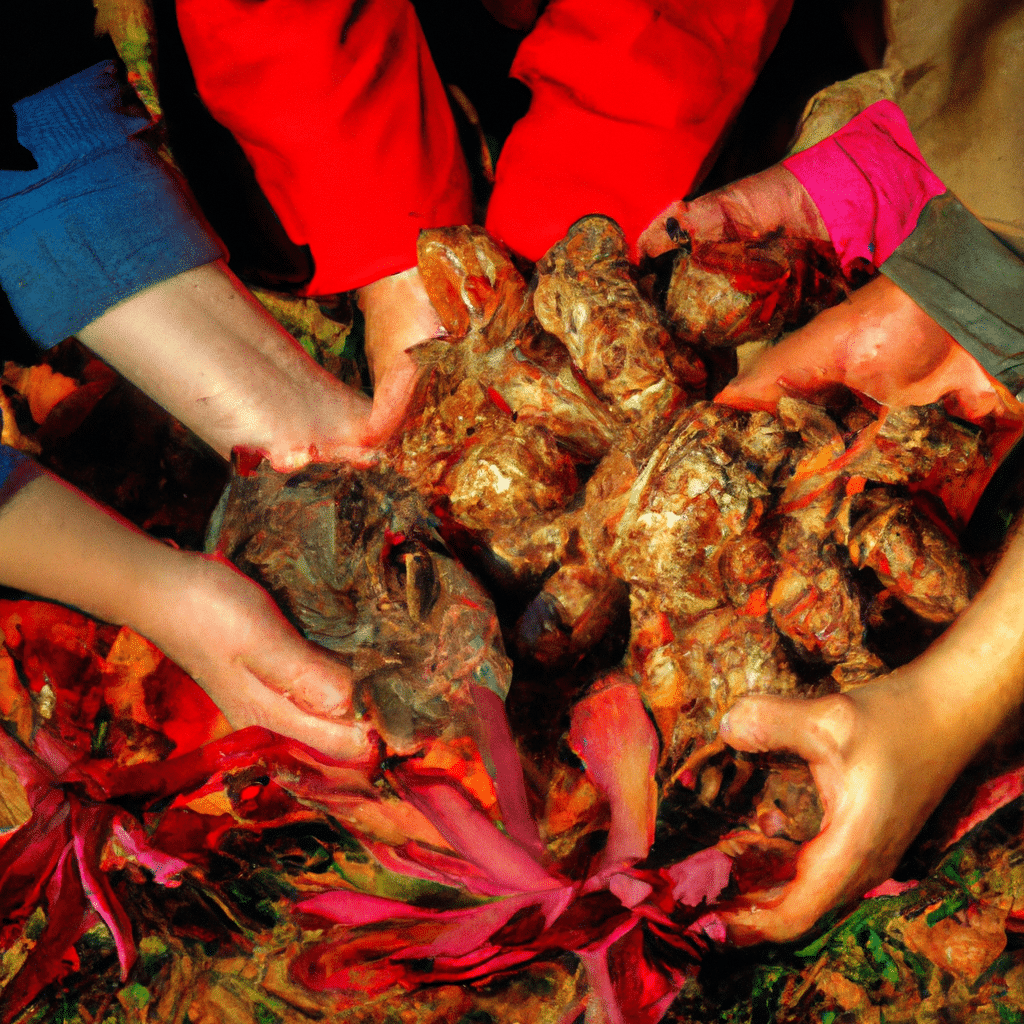If you’re a fan of unique and delicious vegetables, then sunchokes should definitely be on your radar. Also known as Jerusalem artichokes, these tubers offer a delightful flavor and a multitude of health benefits. In this comprehensive guide, we will delve into the art of harvesting sunchokes, sharing tips and insights that will help you become a pro at unearthing these tasty treats!

What are Sunchokes?
Sunchokes are root vegetables that belong to the sunflower family. Despite their name, they are not related to artichokes nor do they come from Jerusalem. Native to North America, sunchokes were cultivated by Native Americans long before the arrival of European settlers. These tubers have a knobby appearance, similar to ginger, and a unique flavor that combines the sweetness of a potato with the nuttiness of an artichoke.
Choosing the Right Variety
Before you embark on your sunchoke harvesting journey, it’s important to select the right variety for your garden. There are several different types of sunchokes available, each with its own unique characteristics. Some popular varieties include:
- Dwarf Sunray: This variety is known for its compact size, making it ideal for smaller gardens or containers.
- Stampede: If you’re looking for larger tubers, the Stampede variety is a great choice. It produces robust and flavorful sunchokes.
- Fuseau: One of the most common varieties, Fuseau is known for its high yield and smooth skin.
- Red Fuseau: This variety offers a beautiful red skin, adding a splash of color to your garden.
Preparing the Soil
Sunchokes thrive in well-drained soil that is rich in organic matter. Before planting, it’s essential to prepare the soil to create the perfect growing conditions for these tubers. Start by removing any weeds or debris from the area where you plan to plant your sunchokes. Loosen the soil to a depth of at least 12 inches, incorporating compost or aged manure to improve its fertility. Adding organic matter will enhance the soil’s ability to retain moisture and nutrients, ensuring healthy growth for your sunchokes.
Planting Sunchokes
Once you have prepared the soil, it’s time to plant your sunchokes. The best time to plant is in early spring, after the threat of frost has passed. Follow these steps to ensure successful planting:
- Dig holes that are approximately 4-6 inches deep and 12-18 inches apart.
- Place the tubers in the holes with the knobby side facing up.
- Cover the tubers with soil, gently patting it down to eliminate air pockets.
- Water the area thoroughly to provide moisture for the newly planted sunchokes.
Caring for Your Sunchokes
Sunchokes are relatively low-maintenance plants, but they still require proper care to ensure optimal growth and harvest. Here are some essential tips to keep in mind:
- Watering: Sunchokes prefer consistently moist soil, so it’s crucial to water them regularly. Aim for approximately 1 inch of water per week, especially during dry spells.
- Mulching: Applying a layer of organic mulch around your sunchokes will help retain soil moisture and suppress weed growth.
- Fertilizing: While sunchokes don’t require excessive fertilization, a balanced organic fertilizer can be applied in early spring to promote healthy growth.
- Staking: As your sunchokes grow taller, they may require support to prevent them from toppling over. Consider staking them to ensure they remain upright and sturdy.
Harvesting Sunchokes
The moment you’ve been waiting for has finally arrived! Harvesting sunchokes is an exciting process that requires a bit of patience and care. Here’s how to do it:
- Timing: Sunchokes are best harvested after the first frost, as this helps convert their starches into sugars, enhancing their flavor. However, you can also harvest them earlier if desired.
- Digging: To harvest sunchokes, carefully dig around the base of the plants using a garden fork or shovel. Be cautious not to damage the tubers in the process.
- Storage: Once harvested, sunchokes can be stored in a cool, dark place for several weeks. Alternatively, you can leave them in the ground and harvest as needed, as sunchokes have a long harvesting window.
Cooking and Enjoying Sunchokes
Now that you have successfully harvested your sunchokes, it’s time to explore the various culinary possibilities they offer. Sunchokes can be enjoyed in a multitude of ways, including:
- Roasting: Toss sliced sunchokes with olive oil, salt, and pepper, then roast them in the oven until they turn golden and crispy.
- Mashing: Boil sunchokes until tender, then mash them with butter, garlic, and herbs for a delightful twist on traditional mashed potatoes.
- Soups and Stews: Sunchokes add a unique flavor and texture to soups and stews. Simply chop them up and toss them in your favorite recipes.
- Salads: Thinly slice raw sunchokes and add them to salads for a crunchy and refreshing addition.
Conclusion
In conclusion, mastering the art of harvesting sunchokes is a rewarding endeavor that will bring you a plethora of delicious meals. By following the steps outlined in this guide, you can confidently grow, harvest, and enjoy these unique tubers. Remember to choose the right variety, prepare the soil, and provide proper care throughout the growing season. With a bit of patience and dedication, you’ll be savoring the delightful flavors of sunchokes in no time!



